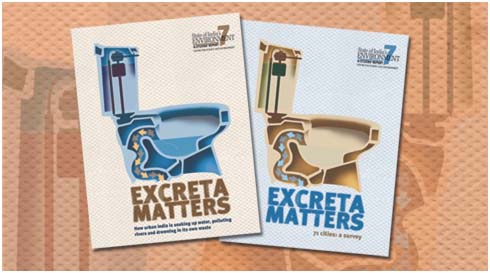/topics/treatment-and-purification
Treatment and Purification
Strengthen participatory urban governance to prevent pollution in Ganga at Kanpur and recognise the need to look for decentralized solutions
Posted on 31 Jul, 2012 02:17 PMA one day Area Water Partnership Conference was held on 22nd July, 2012 by Shramik Bharti, Kanpur; Society for Action in Community Health (SACH) and Society for Promotion of Wastelands Development (SPWD), New Delhi at Jajmau, Kanpur, an industrial city on the banks of the Ganga which also happens to be a major centre for leather tanneries, which let out
Has the revised draft of the National Water Policy 2012, released by the Ministry of Water Resources in June 2012 incorporated the public's feedback ?
Posted on 21 Jul, 2012 07:45 PMOn 31st January 2012, the Ministry of Water Resources (MoWR) had released the draft of the National Water Policy 2012 and invited comments till 29 February. Following the meeting of the National Water Board on 7th June 2012, the MoWR has now put up a revised draft on their website.
Fighting water borne disease at the household level
Posted on 16 May, 2012 12:58 PMBeing the second most populous nation in the world with 1.22 billion people, India is all set to take the first position, replacing China by 2030. As per the present population growth rate of 1.58%, India is expected to be a 1.53 billion plus nation by 2030.
Effects of industrial and agricultural activities on properties of groundwater - A paper published in the Bulletin of Environment, Pharmacology & Life Sciences
Posted on 05 May, 2012 03:24 PMThe main sources of groundwater contamination are industrial, municipal and agricultural wastes (both solid and liquid), rocks, sludge and slimes, refuse, pesticides, herbicides, effluents from livestock and poultry farms. Many pollutants are even able to penetrate into groundwater aquifers.
Fluorosis mitigation in Dhar, Madhya Pradesh: Experiences of monitoring fluoride levels in drinking water and human urine, and implementing mitigation measures
Posted on 04 May, 2012 08:48 AMBackground:
62 million people in India, including 6 million children suffer from fluorosis. The root cause of this is excessive fluoride (>1.5mg/l) in groundwater, as is found in 20 states across India.
Objectives:
"Excreta Matters" - A profile of the water and sewage situation in 71 Indian cities - A report by the Centre for Science and Environment
Posted on 02 May, 2012 12:24 PMGuset post: Amita Bhaduri

Source: Excreta Matters, Centre for Science and Environment, 2012
People in National capital territory of Delhi are far away from safe drinking water: Role of governance and civil society
Posted on 30 Apr, 2012 09:56 PMPhysicochemical assessment of water quality with respect to remote sensing and GIS techniques - Paper published in the journal Advances in Pure and Applied Chemistry
Posted on 30 Apr, 2012 12:43 PMThe paper informs that current techniques normally used in the country for monitoring and assessment of the quality of water bodies involve in situ measurement and/or the collection of water samples for subsequent laboratory analysis of the chemical, physical and biological characteristics of water.
Depleting water resources in Thalassery, Kerala: Huge effort is required to address water supply and sewerage handling issues
Posted on 22 Apr, 2012 02:57 PMAuthor : Fazal Maliyakkal
A framework for rural drinking water quality management, based on experiences from the voluntary sector - A learning document by Arghyam
Posted on 20 Apr, 2012 04:33 PMThe phases that have been identified for a sustainable WQM programme are:
(1) Assessment of baseline situation
(2) Participatory planning
(3) Water quality monitoring
(4) Implementation





